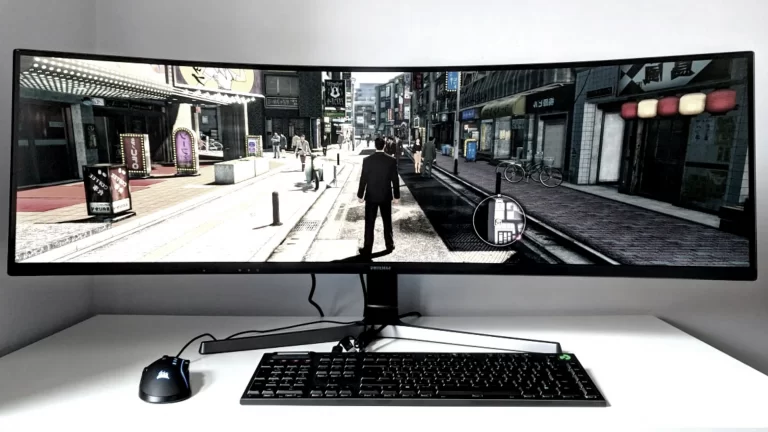IPS VS LED Monitor – Which One Should You Choose ?
The monitor is one of the most difficult and perplexing devices to comprehend because it necessitates a thorough understanding of a staggering number of technical words. Worse, these are acronyms that are the source of the confusion.
However, all of these abbreviations are related to monitoring or television display technology, but what would a casual user, which is the majority of people, do when faced with so many options?
Adding further, we examine the two most common display technologies in use today and explain the distinctions between them to assist you in making a more informed decision when purchasing a monitor.
IPS VS LED
The quality of a PC setup is heavily influenced by monitors. As a result, it’s critical to choose wisely to avoid future regrets. Many consumers, however, are still undecided about whether IPS or LED displays are ideal for them.
Further, we’ll learn about the main differentce between IPS and LED.
IPS
In-plane switching is abbreviated as IPS. It’s a technique for producing LCD (Liquid Crystal Display) panels.
When compared to other types of display panels, IPS panels are noted for their color fidelity and wide viewing angles. They are primarily regarded as a refuge for graphic designers. Adding further, the liquid crystal molecules of IPS panels are oriented parallel to the substrate plane.
As a result, IPS panels have far broader viewing angles than earlier technologies, and some high-end IPS panels can display over 1 billion colors, delivering better image quality than TN and VA panels.
However, the display quality of this sort of monitor is its key selling feature. Because of its color accuracy, the graphics it generates are frequently colorful and detailed.
LED
Light Emitting Diodes, or LEDs, are a sort of backlight or display technology that uses LEDs to illuminate each pixel. The while panels are lit by a universal backlight most of the time, but each individual LED is regulated separately.
However, each LED in the display panel is refreshed at the same time, rather than refreshing the screen from left to right and top to bottom.
Adding further, LED panel technology is interesting because it provides brighter displays while using less energy than conventional screen technologies. It means that users would be able to save a small amount on their electricity bills.
Additionally, this technique is used in monitors because it saves energy and allows for brighter displays. LEDs are also noted for their lightning-fast refresh rates and instantaneous reaction times.
Moreover, to make the source of light more consistent throughout the entire screen, a light diffuser is put between the light source and the array of LEDs.
Furthermore, there are a plethora of low-cost LED monitors available. This sort of monitor usually has more features, is more reliable, and has a higher dynamic contrast ratio.
Lastly, LED displays are frequently less expensive, have a wider dimming range, are generally considered to be highly reliable, have a greater dynamic contrast ratio, and have a lower environmental impact.
Now that we have a good understanding of the terms IPS and LED, we can go on to the next step. Let’s look at the differences between them and determine if an IPS or LED monitor is superior.
Difference Between IPS & LED
Following are the top 9 distinctions between IPS and LED monitors to be aware of:
Technology
Panel Technology includes IPS monitors. Backlight technologies, on the other hand, include LED monitors. However, despite their technological differences, they can work together if they are compatible.
Adding further, in truth, IPS panels are all LCD panels, but LCD panels are not all IPS panels. In any event, IPS refers to the position or orientation of molecules within a display’s liquid crystal.
Lastly, the liquid crystal molecules of IPS panels are oriented parallel to the substrate plane. LED light-emitting diode) is a flat panel display technology that employs a variety of light sources.
IPS monitors have a response time of roughly 10 milliseconds. Even while 10 milliseconds isn’t a long time, it’s enough for some of the more fast-paced online games. It will make a significant effect and may lead the player to react more slowly.
It is common knowledge that in fast-paced FPS (First-Person Shooter) games, a higher refresh rate assists players to respond faster and perform better.
Moreover, LED Monitors, on the other hand, do not suffer from this problem, and some even have refresh rates as high as 144Hz.
Power Consumption
Because IPS panels produce high-quality images, they require more power to keep up with all of the on-screen activity.
However, LED monitors may appear to have brighter panels, yet they use less electricity than IPS monitors. LED monitors have become a more popular LCD backlighting technology as a result of this.
Image Quality
LED monitors aren’t great at accurately reproducing black, but they do offer a lot of contrast whereas you can receive a far more gratifying experience with IPS technology, which delivers clear and crisp images through rich colors, as well as improved color consistency.
Price
IPS monitors are, without a doubt, more expensive than non-IPS monitors. Despite this, many gamers consider LCD LED displays to be a good investment, particularly for FPS games or if you’re on a tight budget.
Display
IPS monitors allow you to observe the monitor from a wide-angle (178° to be exact) without witnessing color shifting. This means you can look at the monitor from any angle without having to worry about color shifts.
However, LED displays may not have wide viewing angles, but you can count on a brighter screen in all directions.
Heat
Even though LED monitors have a considerably brighter display, they consume less electricity and produce less heat.
Further, IPS monitors use a lot more electricity yet produce significantly clearer images. Because of the higher power usage, these monitors generate more heat than their LED counterparts.
Compatibility
IPS and TN panels both have LED-backlit displays, and IPS panels can have either LED or LCD backlighting. Further, IPS panels with LED backlighting are used in LCD monitors.
Performance
When viewing a screen from various angles, IPS display panels have the least amount of brightness variation.
However, they are more expensive to manufacture, consume more power, and have longer response times than their equivalents.
LED displays, on the other hand, require less electricity and provide superior picture quality with a higher contrast ratio because they use light-emitting diodes as backlights.
Frequently Asked Questions
Are IPS better for the eyes?
Because IPS panels produce high-quality images, they require more power to keep up with all of the on-screen activity. However, LED monitors may appear to have brighter panels, yet they use less electricity than IPS monitors. This is why LED monitors have become a more popular LCD backlighting technology in recent years.
Which display is best for the eyes
Because of its high contrast levels and per-pixel light-emitting diodes, OLED displays are the best for your eyes.
To know more about OLED displays visit: Different types of computer monitors.
Are IPS monitors good for Photo editing?
For color-conscious users, IPS panels are the monitor of choice. They support color space monitor technologies the best, give better color depths and contrast ratios, and prevent visual distortion and color shifting.
To know more about photo editing monitors Visit: Best monitors for photo editing under 500.
Among LED & IPS which is better for gaming?
Because IPS panels produce high-quality images, they require more power to keep up with all of the on-screen activity. Moreover, LED monitors may appear to have brighter panels, yet they use less electricity than IPS monitors.
CONCLUSION
In conclusion, we can say that It doesn’t seem fair to compare IPS and LED teciting at their differences. After all, one is a type of LCD panel, while the other is a type of LCD backlight.
However, IPS monitors are ideal for graphical gaming, content creation, and professionals that edit images and movies. Although the sharp image display and high-quality colors are ideal for gaming, they may not be worth it for competitive FPS players.
In final words, each monitor has its own set of advantages to cFinallyer, regardless of which IPS or LED display monitor you buy, as long as it meets your demands and preferences, the chances of you regretting your decision in the long term are minimal.
Visit: TN vs IPS to know the difference between these two.


